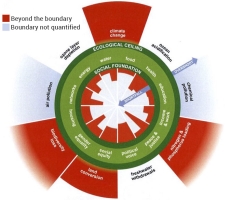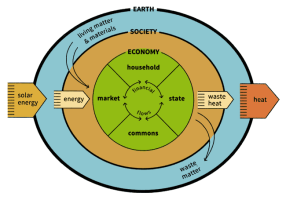Change-Aide Overview
Change approach overview
Change-Aide provides a unique approach to change through a systems view of change. This approach allows us to scale change from personal change to approaches that deal with the complex 21st century problem we face today. The United Nations Sustainable Development Goals provide a clear example of the challenges we face today.
Today we deal with complex interdependent systemic problems that can only be addressed through systemic solutions.
This type of approach to change requires a multi-disciplinary understanding of the systems that are causing our problems and the changes that are required to these systems to address the problems.
Our approach builds on system science to:
- identify, classify and understand the systems that are involved.
- describe each system using a simple system description.
This allows each system to be seen in context as:
- Interacting system peers (system of systems)
- Hierarchical system composition for a System-of-Interest.
- Identification of a system that is both a system element and a system (called a holon) within a system-of-interest.
The system descriptions are then used to identify the types of systems in the following areas:
- Biological systems (cells, organisms)
- Social Systems (Human Activity Systems, Enterprise, Business, Community of Practice, etc)
- Management Systems
- Designed Physical and Abstract Systems
- Ecosystems (local city regions, natural, human activity, Earth Systems, etc)
The United Nations Sustainable Development Goals has identified the key areas that change is required. The goals represent the targets that need to be achieved to ensure that the Earth continues to be able to sustain life. Today, we are in a situation where a number of safe planetary boundaries have been exceeded. Kate Raworth in her book, Doughnut Economics, has proposed a way to visualise the effects of human activity on the planet. This doughnut model integrates:
Planetary Boundaries
Gaps are becoming more apparent in our ability to sustain life on the Earth:
- Planetary Boundaries are being exceeded
- United Nations Sustainable Development Goals are not being met
We are not living within the safe and just space for humanity within the doughnut. The doughnut is like a Balanced Scorecard used to visualize the state of the Enterprise. The current doughnut for the Earth is shown below. The red areas represent targets that have not been achieved or boundaries that are being exceeded:
From Kate Raworth 2017
This model shows the areas where we have already exceeded safe planetary boundaries and are falling short on our progress towards the United Nations Sustainable Development Goals.
To understand the changes necessary to return to the safe and just space of the doughnut, we must understand the following:
- What are the systems that are creating the problems?
- What changes are required to each system?
- What is the order that the changes must be made?
- What is the cost (psychological and in monetary terms) that must be covered?
The Doughnut
The basic model of the doughnut is shown below. The green area representing the doughnut is the safe and just space for humanity for the systems to operate in the planet.
From Kate Raworth 2017
Embedded Economy
Kate Raworth has also provided the 'embedded economy' model that can be used to identify the systems that need to be changed. This model can be shown to integrate the System Classification system created by Peter Checkland in his book: Systems Thinking; Systems Practice.
- Natural Systems
- Human Activity Systems
- Management Systems
- Designed physical and Abstract systems
- and transcendental systems that are yet to be identified
From Kate Raworth 2017
CDSL Strategy
Today, we are in the process of aligning all of our work to support the achievement of the United Nations Sustainable Development Goals. As a result, we are:
- Ensuring that all of our work is aligned directly or indirectly to achieving the United Nations Sustainable Development Goals..
- Establishing and implementing management systems that deliver the intended objectives.
- Re-purposing all of our capabilities developed for the enterprise to support the understanding of Earth Systems (planetary systems)
- Building on Kate Raworth's Doughnut Economics models to model the systems and identify the critical changes that need to be made.
Though we are still in transition to this new purpose, we are making some good progress. This website will provide the links to the work we are doing. We are building on the following areas:
- Systems Science and the development of a System-of-Interest Architecture Description Framework, including
- Living Systems (including a cell, an organism, a person, a social system, and an ecosystem)
- The Enterprise as a System of Systems and the Enterprise (SoS) Architecture Description Framework, including
- Management Practice (Including programme and project management)
- Integrated Management Systems to enable the organizations to achieve their objectives.
- System Engineering (including architecture and design and life cycles).
- Approaches to Change
- Earth (Gaia) Systems as a System of Systems and the Human Activity Ecosystem Architecture Description Framework
This website provides an overview of the above activities. More detailed sites are available with the various approaches and prototypes available for review.
If you have any suggestions or feedback, use the feedback forms at the bottom of each page.
Thank you..


